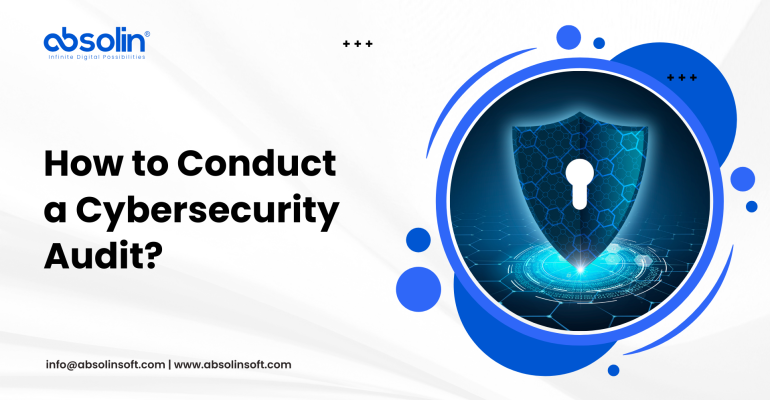How to Conduct a Cybersecurity Audit?
Your business is like a modern digital castle. The treasure inside? Sensitive data, client trust, intellectual property, financial records—everything that keeps your kingdom running. You’ve built high walls (firewalls), hired guards (security software), and locked your gates (passwords and access control). But here’s the real question: how do you know your defenses are still holding up?
Would you wait until an intruder breaks in to find out?
That’s exactly what a cybersecurity audit prevents. It’s the digital version of sending your best knights to inspect the fortress—testing the gates, probing the walls, and spotting any weak spots before enemies do.
In an era where cyber threats are becoming more sophisticated and persistent, regular cybersecurity audits are no longer optional—they’re essential. Whether you’re running a small startup or a multinational enterprise, an audit helps you identify vulnerabilities, stay compliant, and build a proactive defense strategy.
Let’s walk through how to conduct a cybersecurity audit step by step, and why it could be the smartest thing you do for your business this year.
What Is a Cybersecurity Audit?
A cybersecurity audit is a systematic review and evaluation of an organization’s information systems, policies, and practices. The goal? To determine how secure your digital environment really is—and where you’re exposed.
Think of it as a deep dive into:
- Networks
- Devices
- User access
- Policies and procedures
- Incident response plans
- Compliance with industry regulations (e.g., GDPR, HIPAA, PCI-DSS)
Why Conduct a Cybersecurity Audit?
Cybersecurity audits help you:
- 🔍 Uncover vulnerabilities before hackers exploit them
- 📋 Meet compliance requirements and avoid hefty fines
- 🚨 Detect suspicious behavior or breaches early
- 🔐 Strengthen internal controls and employee behavior
- 🧭 Create a roadmap for security improvements
In short, it’s your reality check.
Types of Cybersecurity Audits
Before diving into the process, it’s important to understand the types of audits you might perform:
| Audit Type | Purpose |
| Internal Audit | Conducted by your own team to assess and monitor security posture |
| External Audit | Performed by a third-party to provide unbiased evaluation |
| Compliance Audit | Focused on regulatory adherence (e.g., SOC 2, ISO 27001) |
| Risk-Based Audit | Prioritizes systems based on risk levels and criticality |
Step-by-Step Guide to Conducting a Cybersecurity Audit
1. Define the Scope of the Audit
Start by identifying:
- What systems, devices, and data you want to evaluate
- Which departments are involved
- Any specific compliance standards to assess against
Keep the scope focused if this is your first audit. Expand gradually.
2. Assemble the Audit Team
You’ll need the right mix of technical and operational expertise. The team could include:
- Internal IT/security staff
- Risk management officers
- External cybersecurity consultants or auditors
- Representatives from legal or compliance
Clear roles help avoid confusion during the process.
3. Inventory All Digital Assets
You can’t secure what you don’t know exists. List every:
- Server, workstation, laptop, and mobile device
- Network hardware and IoT devices
- Software applications and third-party services
- Data storage locations (cloud and on-prem)
- User accounts and access levels
Use automated asset discovery tools if needed.
4. Evaluate Access Controls and Permissions
Audit who has access to what:
- Are there unused accounts still active?
- Are users practicing strong password hygiene?
- Are access levels appropriate for job roles?
Review:
- Identity and Access Management (IAM) policies
- Multi-factor authentication usage
- Privileged account management
5. Analyze Network Security
Here’s where you look at:
- Firewalls and VPNs
- Intrusion detection/prevention systems (IDS/IPS)
- Open ports
- Network segmentation
- Remote access protocols
Simulate network scans or use penetration testing tools to spot vulnerabilities.
6. Assess Data Security and Encryption
Check how sensitive data is:
- Stored
- Transmitted
- Backed up
- Encrypted (both at rest and in transit)
Evaluate your data classification, data retention policies, and encryption standards (e.g., AES-256).
7. Review Security Policies and Procedures
Are your internal policies up-to-date and enforced?
Review:
- Password policies
- BYOD (Bring Your Own Device) policy
- Incident response plans
- Security awareness training programs
- Vendor security standards
Look not just at what exists, but how well it’s followed.
8. Evaluate Compliance Requirements
Based on your industry and geography, you may need to follow:
- GDPR (for handling EU customer data)
- HIPAA (for healthcare data)
- PCI-DSS (for processing payments)
- ISO 27001, SOC 2, NIST, etc.
Ensure all documentation is in order and audit trails are in place.
9. Identify Vulnerabilities and Threats
Use:
- Vulnerability scanners (e.g., Nessus, OpenVAS)
- Manual testing and configuration checks
- Threat intelligence tools
Log every weakness: outdated software, weak firewall rules, default passwords, and missing patches.
10. Create a Detailed Audit Report
Summarize:
- What was assessed
- What vulnerabilities were found
- Risk severity levels
- Regulatory gaps
- Actionable recommendations
Prioritize fixes based on impact vs. effort.
Post-Audit Actions: Turning Findings into Security Wins
Fix Critical Issues Immediately
Patch systems, remove rogue accounts, enforce password resets.
Implement a Security Improvement Plan
Include budget allocation, timelines, and responsibilities.
Schedule Regular Audits
Cybersecurity isn’t a one-time activity. Make audits part of your routine.
Train Your Team
Technology only works if your people know how to use it safely. Include social engineering awareness and phishing simulation drills.
Tools That Can Help
- Nessus – Vulnerability scanning
- Wireshark – Network packet analysis
- Burp Suite – Web application testing
- Splunk or ELK Stack – Log analysis
- Qualys or Rapid7 – Enterprise-grade security audit tools
Conclusion: Don’t Wait for a Breach to Realize What’s Broken
A cybersecurity audit isn’t just a checklist—it’s your shield against the unknown. In a world where cyberattacks are not a question of if but when, auditing your defenses could be the decision that saves your business.
Just like a castle under constant threat needs regular inspection of its walls and gates, your organization needs continuous assessment to survive and thrive in the digital world. So don’t wait for a breach to find out where you’re vulnerable—audit now, secure forever.



